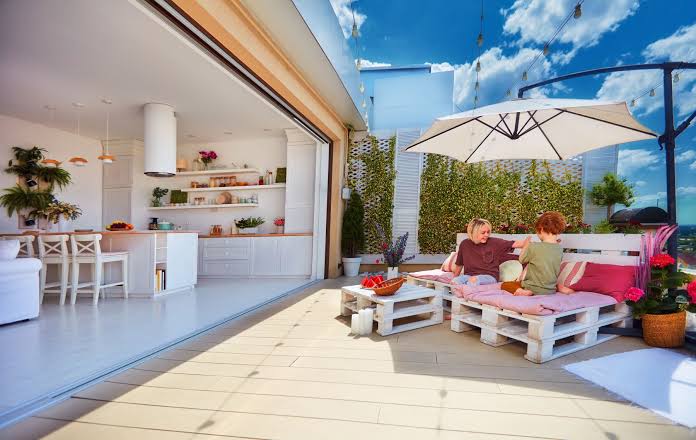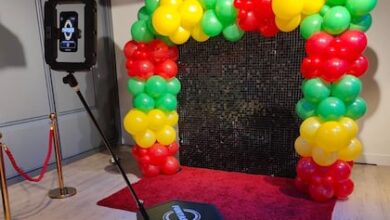The Rise of Outdoor Leisure Spaces

Private outdoor spaces are being redefined. Patios, gardens, and yards are no longer passive backdrops. They are now functional zones for rest, recovery, and leisure, part of daily life, not just decoration.
Homeowners are turning away from cluttered indoor routines and building outdoor environments that support clarity and presence. This shift isn’t driven by aesthetics or novelty. It’s a practical response to mental fatigue, digital overload, and the need for routines that support better use of personal time.
Screens dominate nearly every indoor setting. Even rest is interrupted by notifications or background noise. Outdoor spaces offer something different: a physical boundary that encourages better focus and more deliberate use of time.
Whether it’s a corner set up for quiet reading, a play area for unstructured downtime, or a dedicated game zone, the outdoors is proving to be a powerful tool for structured relaxation.
Design plays a key role. Furniture, zoning, and surface choices shape how often the space is used, and how well it serves its purpose. When done right, outdoor leisure areas don’t just look good. They become active parts of the day, improving how people recharge, connect, and reset without relying on digital inputs.
Indoor Fatigue Is Driving a Shift Outside
Home routines are under pressure. The rise of hybrid work, constant streaming, and 24/7 connectivity has made indoor environments more crowded and less effective for rest.
Many homeowners report a drop in focus, higher stress levels, and less meaningful downtime. As a result, more people are actively reshaping their living habits, starting by reclaiming their outdoor space.
Gardens, patios, and backyards are no longer being treated as extra or seasonal. They are being reassessed as practical tools for daily recovery.
Structured downtime can be created by blending active and passive outdoor zones. Home Games Room is a UK-based provider of premium leisure furniture, including weather-resistant outdoor pool tables designed for home enjoyment.
People are building zones that allow clearer boundaries between work, rest, and leisure. Instead of forcing downtime into crowded living rooms or overstimulated bedrooms, they’re stepping into spaces with fewer digital triggers. The physical change of setting helps reinforce better routines and reduces mental clutter.
This shift is measurable. Sales of modular outdoor furniture, covered patios, and compact garden utilities continue to rise. Design shows and wellness blogs are covering outdoor routines as part of everyday life. The message is consistent: people want a break from screen-heavy habits, and they’re building that break directly into their homes.
The Psychological Benefit of Stepping Outside
Outdoor environments reduce sensory noise. Green space, fresh air, and open light conditions help the brain reset, especially after long exposure to indoor stimuli.
Research in cognitive psychology shows that even short exposure to natural surroundings improves working memory and lowers stress markers. This makes outdoor spaces a valuable tool for mental upkeep, not just an aesthetic bonus.
The benefit comes from structure, not just setting. Stepping into a defined outdoor space signals a shift in pace.
Whether it’s a lounge chair, a garden bench, or a space designed for the outdoors, the goal is the same: to create an area where time is spent with focus and intention. The best use cases come from repeated interaction, daily pauses, weekend games, and quiet hours with no devices in hand.
This physical separation supports better habits. Instead of trying to rest in the same areas used for work or passive scrolling, users gain a fresh rhythm.
The outdoors supports routines that are harder to sustain indoors. It promotes active leisure, quiet thought, and a change in posture, all of which contribute to long-term cognitive clarity. In practice, this makes outdoor spaces more than just an option. They become necessary infrastructure for mental reset.
Rituals That Help Create Outdoor Flow
Consistency shapes how outdoor spaces are used. When a space has a purpose, it’s more likely to become part of a daily or weekly routine. Reading corners, play areas, morning coffee spots, and outdoor lounge setups are not just nice to have, they build structure around rest.
These rituals don’t require complex design. A shaded chair near a planter can turn into a daily reading nook. A set of cushions or low benches creates a family-friendly area for games, puzzles, or quiet sketching. The key is to make the setup frictionless: accessible, weather-ready, and tied to a specific time of day or habit.
Families benefit from these routines as much as individuals do. A play zone used after dinner or a weekend breakfast corner outside becomes an anchor. Over time, these behaviours add up. The space earns its place in the routine because it delivers consistent value.
What matters is repetition. Spaces that serve a clear function invite return use. When homeowners treat their outdoor areas as habit zones rather than occasional escapes, they get more from them.
Flow is built by doing, and these micro-rituals become the foundation for sustainable, screen-free leisure that fits into real life.
Physical Games and the Return of Slow Play
Outdoor leisure includes rest, light movement, and low-pressure interaction. Physical games like ping pong, lawn darts, and boules are gaining ground as part of daily garden use. These games require no screens and offer natural entry points for people of different ages to engage without distraction.
They also create rhythm. A quick rally on a ping pong table, a round of darts, or an impromptu family match gives structure to otherwise idle time. Unlike high-speed entertainment, these games promote attention, light movement, and interaction. The pace is slower, but the reward is more lasting, face-to-face time, mental reset, and hands-on play.
Game zones don’t need to dominate the space. A small table, a clear patch of ground, or a folding setup stored in a weatherproof box is enough. What matters is availability. If the equipment is ready to use, it becomes part of the habit.
Physical play reintroduces active presence into outdoor routines. It invites casual participation while reducing digital dependency. To build sustainable leisure habits, add simple games to outdoor zones; they provide a reliable outlet for downtime and reduce reliance on indoor screens.
Smart Design Choices That Increase Daily Use
Outdoor design is now tied to mental use, not just physical arrangement. As noted in The Guardian’s coverage on garden wellbeing, the setup of a space can influence how often and how meaningfully it gets used. That link between design and habit is what keeps the space active.
The usability of an outdoor leisure space depends on design choices that support real-life routines. Covered zones, weather-resistant seating, and flexible layouts help reduce barriers to use. People don’t return to spaces that require setup every time. They return to spaces that stay ready.
Furniture that handles exposure, outdoor-rated tables, loungers, and game equipment, reduces maintenance friction. Storage also matters. Benches with built-in compartments, or nearby sheds, keep cushions, games, and accessories accessible without cluttering the area.
Lighting plays a role, too. Wall-mounted or solar lights extend use into the evening without making the space feel artificial. Good layout also buffers noise and builds comfort. Zoned areas, one for lounging, another for play, help each activity stay focused and contained.
Multi-function is the rule. One area might shift from morning coffee to afternoon games to weekend entertaining. The more roles a space can play without friction, the more value it delivers daily.
A Weekend Routine Rebuilt Outdoors
A structured outdoor routine doesn’t need to be complicated to be effective. One common example is a weekend morning habit built around consistency, not entertainment. A small patio setup: two chairs, a side table, and a low-maintenance planter, becomes the base for repeat use.
A household might start the day with a quiet coffee outside, no devices. It’s followed by a slow game or light garden work. Children use a play corner for drawing or simple games, while adults take a short pause. The setup doesn’t change, but the ritual builds value through use.
The Mental Health Foundation notes that spending time in green space supports better focus, lowers stress, and improves daily mood regulation. These benefits multiply when the space becomes part of a fixed rhythm. By integrating outdoor routines into weekends, the garden shifts from being occasional to essential.
What makes this work is repetition. The garden isn’t being reserved for special occasions or seasonal use. It’s integrated into real life. Each return to the space confirms its role as part of the weekend rhythm. This structure supports mental reset without forcing it, which is why routines like this continue even after novelty fades.
Gardens Are Now for Minds
Outdoor spaces are now part of daily mental upkeep. They are being designed to support routine, attention, and real recovery. These areas are no longer passive or seasonal, they’re becoming core zones for structured downtime, especially as indoor environments remain saturated with screens and digital noise.
Homeowners are prioritising usability over appearance. That shift shows how outdoor zones are furnished, zoned, and maintained. Quiet corners are kept clear and functional. Game setups are left in place. Lighting, surface choices, and weatherproof materials support return use without constant prep.
A well-used garden doesn’t need to be complex. It needs to be consistent. When it supports real habits, a morning pause, a quiet play session, a routine outdoor game, it becomes part of the mental rhythm of the household. It moves from being a background area to a functional one.
This is the direction many homeowners are heading: not temporary upgrades, but long-term changes that improve how the space is used. Outdoor areas are now a tool. They support attention, rest, and focus, and they’re being treated as essential infrastructure for clearer, healthier living.




